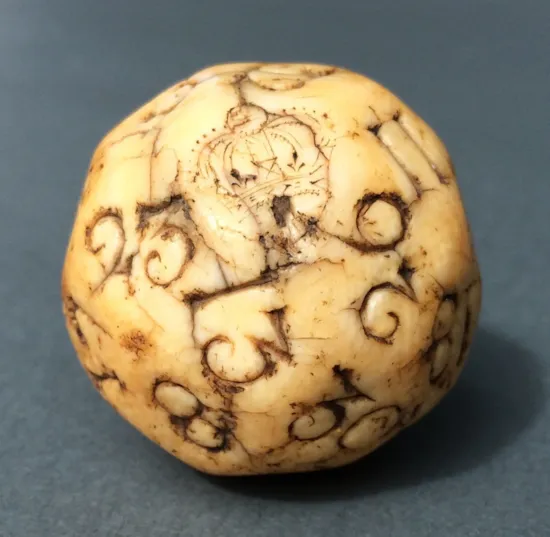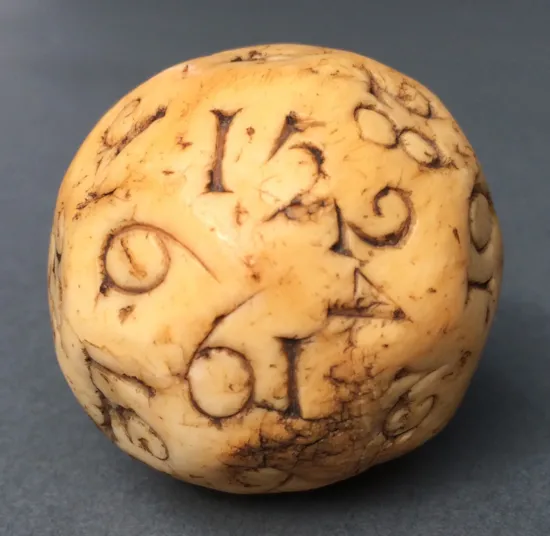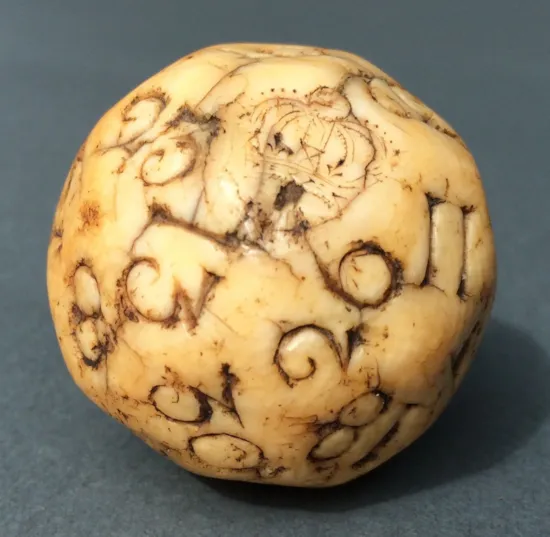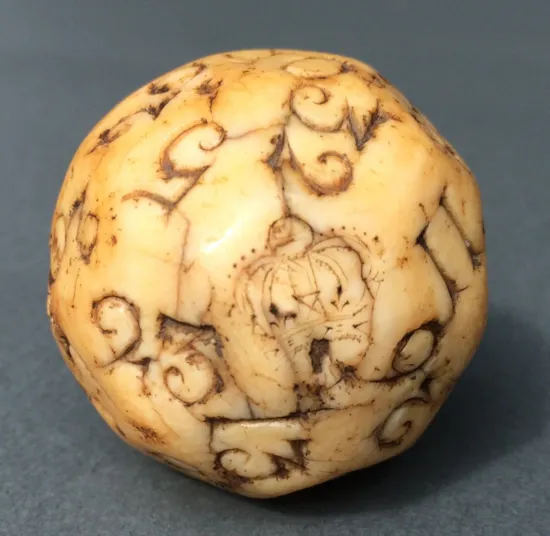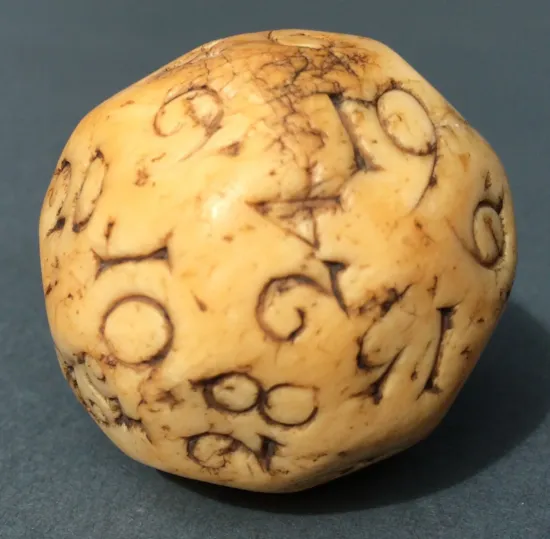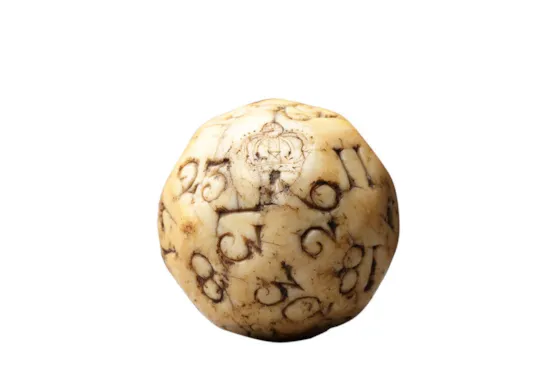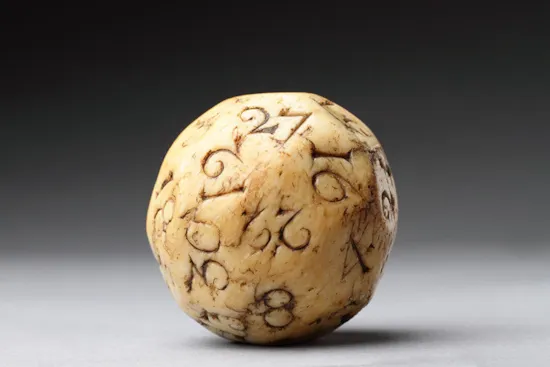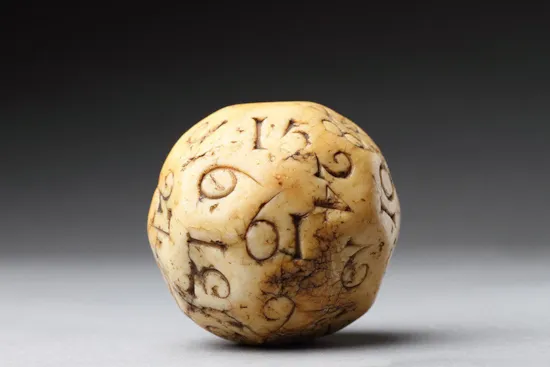English Carved Ivory Lottery or Teetotum Gambling Ball
An Early English Carved Ivory Lottery or Teetotum Gambling Ball Etched with a Crown and Incised on 32 Sides with the Numbers 1 to 32
Old smooth creamy yellow patina
Late 17th Century
Size: 5cm dia. – 2 ins dia. (max)
See: Finch & Co catalogue no. 20, item no. 42, for an example inscribed ‘Royal Oak’ and also catalogue number 21, item number 35, for a similar example
Old smooth creamy yellow patina
Late 17th Century
Size: 5cm dia. – 2 ins dia. (max)
See: Finch & Co catalogue no. 20, item no. 42, for an example inscribed ‘Royal Oak’ and also catalogue number 21, item number 35, for a similar example
Teetotum balls give the gambler more of a winning chance than a spinning dice, because when thrown the faceted numbered sides of a ball give an equal chance of any number turning up, unlike dice.
Lotteries first began to be an acceptable form of raising money for government funds under Elizabeth I in 1568-69 when urgent repairs to the harbours and coastal fortifications of England were needed to repel any seaborne invasion from the Spanish. Successive Acts of Parliament then established lotteries as a legitimate means of increasing revenue and they became a lucrative source of government income even during the Commonwealth under the puritan rule of Oliver Cromwell.
Lotteries first began to be an acceptable form of raising money for government funds under Elizabeth I in 1568-69 when urgent repairs to the harbours and coastal fortifications of England were needed to repel any seaborne invasion from the Spanish. Successive Acts of Parliament then established lotteries as a legitimate means of increasing revenue and they became a lucrative source of government income even during the Commonwealth under the puritan rule of Oliver Cromwell.
English Carved Ivory Lottery or Teetotum Gambling Ball

SOLD
